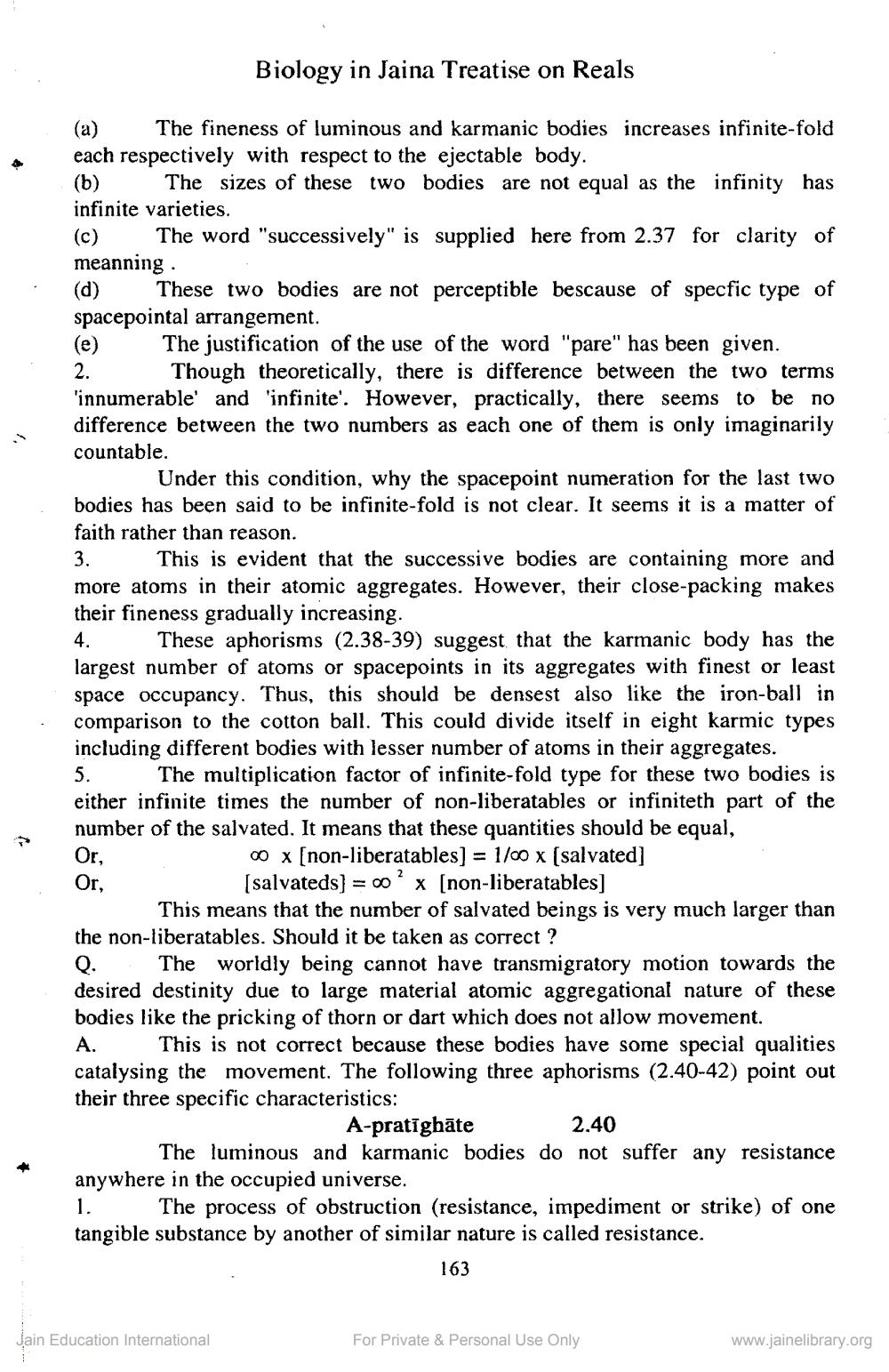________________
Biology in Jaina Treatise on Reals
(e)
(a) The fineness of luminous and karmanic bodies increases infinite-fold each respectively with respect to the ejectable body. (b) The sizes of these two bodies are not equal as the infinity has infinite varieties. (c) The word "successively" is supplied here from 2.37 for clarity of meanning (d) These two bodies are not perceptible bescause of specfic type of spacepointal arrangement.
The justification of the use of the word "pare" has been given. 2. Though theoretically, there is difference between the two terms 'innumerable' and 'infinite'. However, practically, there seems to be no
nce between the two numbers as each one of them is only imaginarily countable.
Under this condition, why the spacepoint numeration for the last two bodies has been said to be infinite-fold is not clear. It seems it is a matter of faith rather than reason. 3. This is evident that the successive bodies are containing more and more atoms in their atomic aggregates. However, their close-packing makes their fineness gradually increasing. 4. These aphorisms (2.38-39) suggest that the karmanic body has the largest number of atoms or spacepoints in its aggregates with finest or least space occupancy. Thus, this should be densest also like the iron-ball in comparison to the cotton ball. This could divide itself in eight karmic types including different bodies with lesser number of atoms in their aggregates. 5. The multiplication factor of infinite-fold type for these two bodies is either infinite times the number of non-liberatables or infiniteth part of the number of the salvated. It means that these quantities should be equal, Or,
00 x [non-liberatables] = 1/00 X (salvated]
(salvateds) = 00 x (non-liberatables] This means that the number of salvated beings is very much larger than the non-liberatables. Should it be taken as correct? Q. The worldly being cannot have transmigratory motion towards the desired destinity due to large material atomic aggregational nature of these bodies like the pricking of thorn or dart which does not allow movement. A. This is not correct because these bodies have some special qualities catalysing the movement. The following three aphorisms (2.40-42) point out their three specific characteristics:
A-pratīghāte
2.40 The luminous and karmanic bodies do not suffer any resistance anywhere in the occupied universe. 1. The process of obstruction (resistance, impediment or strike) of one tangible substance by another of similar nature is called resistance.
163
Or,
Jain Education International
For Private & Personal Use Only
www.jainelibrary.org




